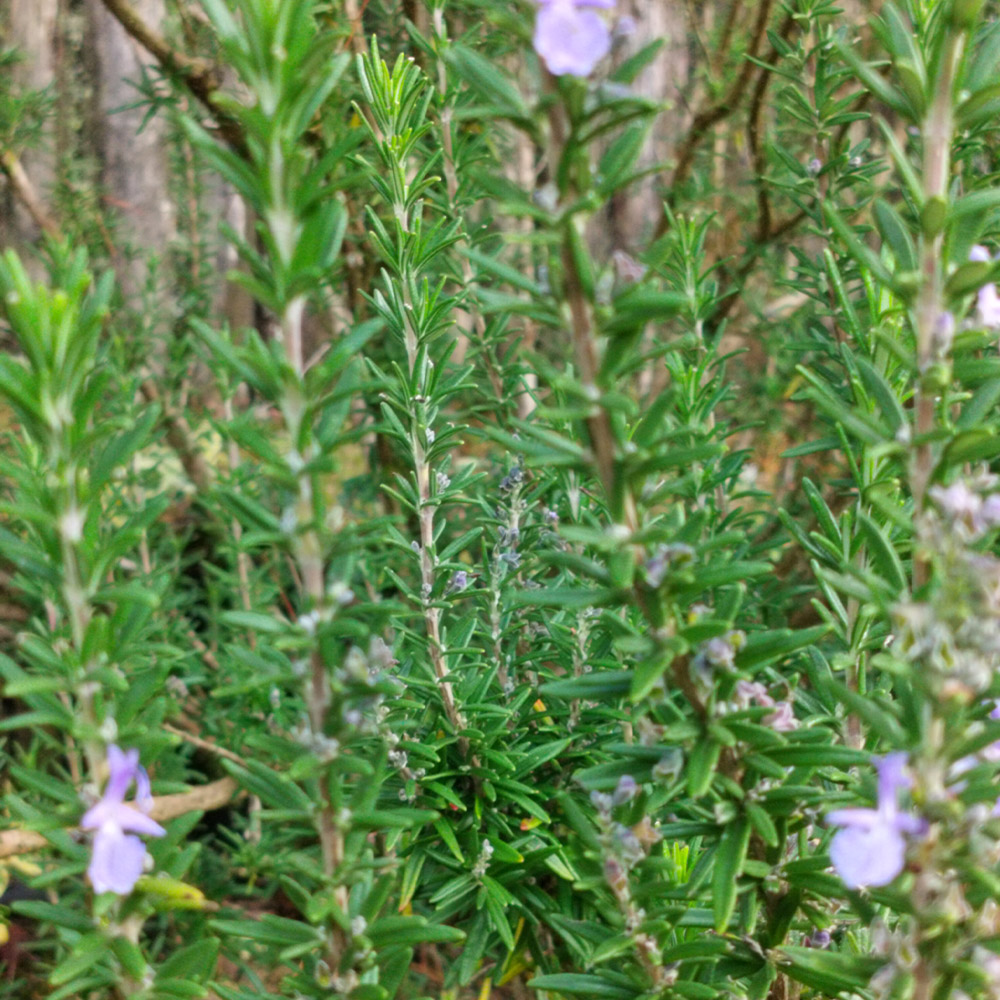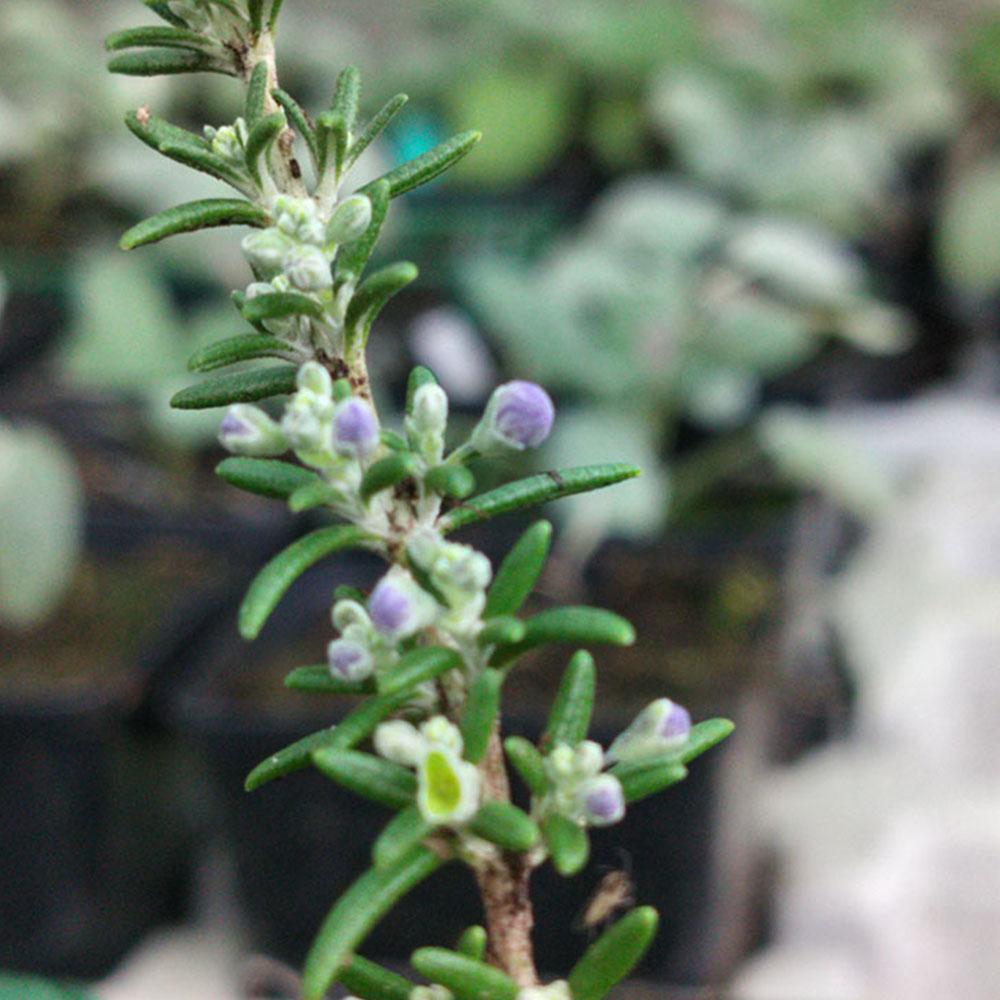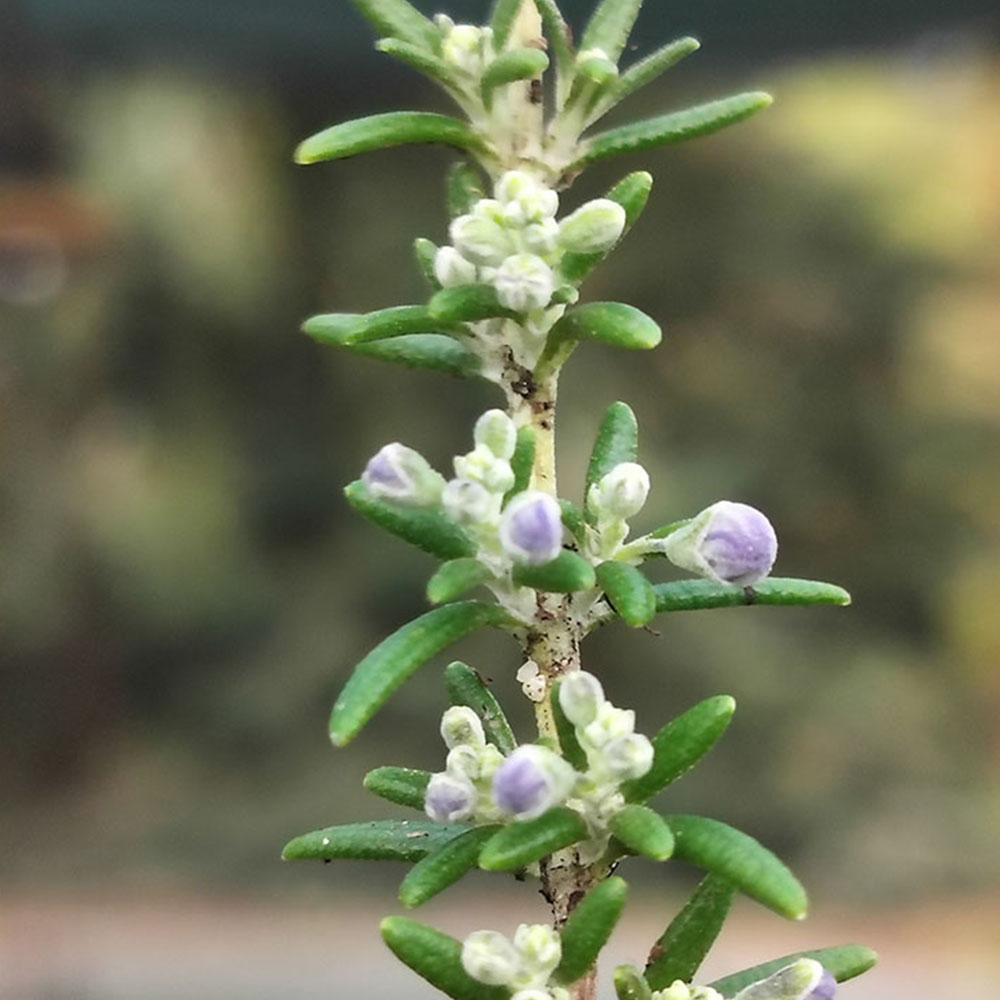No products in the cart.
Rosmarinus officinalis
A drought tolerant, aromatic, perennial that is the center of Mediterranean cuisin
Rated 0 out of 5
0 customer reviews
4,90 € – 12,00 €Price range: 4,90 € through 12,00 €
Tags: aromatique, comestible, feuillage persistant, medicinal, secheresse, vivace, xeriscaping
SKU: pda243
Category: Balcony-Friendly, Bees and Butterflies, Bouquet, Culinary, Distillations, Evergreen, Fragrant, Frost Hardy, Grey Ladies, Ground Cover, Medicinal

Rosmarinus officinalis
4,90 € – 12,00 €Price range: 4,90 € through 12,00 €
Rosmarinus officinalis is a drought tolerant, aromatic, perennial evergreen shrub in the mint family.
Rosemary is a fantastic culinary herb and can be used to flavor and improve any fish – specifically poultry, fish, lamb, beef, tomatoes, mushrooms, cheese, eggs, potatoes, vinegars, and herbal butters.
Both the flowers and leaves of rosemary can be used in cooking and for garnishes.
The leaves can be distilled to produce an essential oil which is often found in soaps and cosmetic products due to its natural astringent properties.
👩🌾GARDENING TIPS👩🌾: Rosmarinus officinalis
-
- Shearing the top encourages the side branches to spread.
- Rosemary really despises sitting in soggy soil and overtwatering so ensure that your soil is sandy, poor, and very well draining.
- In order to harvest from the plant, the bush should be matured 2–3 years to ensure it is large enough to withstand it.
- The rule of thumb is – take 20% of the new growth. This will allow the plant to heal and bounce back without any trouble.
- Looks amazing with Stipa tenuifolia, Festuca glauca, Thymus longicaulis ‘Odoratus’
Learn more about gardening with Rosemary:
Learn more about cooking with Rosemary (and the ever wonderful Everyday French Chef , Miss Meg Bortin)
The Tale & The Botany: Rosmarinus officinalis
Commonly known as rosemary, Rosmarinus officinalis is a small shrub from the Mediterranean basin belonging to the Lamiaceae family.
Beyond its many culinary and medicinal uses, it has long been believed to purify the air and ward off evil spirits, and in Mediterranean traditions it was often burned as incense.
Depending on the region and its natural habitat, Rosmarinus officinalis has developed local variations in terms of hardiness, growth habit, and flowering patterns.
Myths and Legends
The name Rosmarinus comes from the Latin ros maris or ‘dew of the sea’.
Elizabeth Kent noted in her Flora Domestica (1823), “The botanical name of this plant is compounded of two Latin words [ros marinus], signifying Sea-dew; and indeed Rosemary thrives best by the sea.
It was later called Rose of Mary or rosemary in honor of the Virgin Mary.
Rosemary water is often called ‘Queen of Hungary Water’ since it is said that Elizabeth of Poland, one of the Queens of Hungary, was the first to introduce perfume (hers a rosemary-infused alcoholate) to the 14th courts in Hungary.
And one can imagine that life was much more pleasant in the court thereafter.
Floral Morphology
The plant flowers in spring and summer in temperate climates, but the plants can be in constant bloom in warm climates; flowers are white, pink, purple or deep blue.
The branches are dotted with groups of 2 to 3 flowers down its length.
Rosmarinus officinalis also has a tendency to flower outside its normal flowering season; it has been known to flower as late as early December
The plant can live as long as 35 years – I’ve known one that was older than me today – it was 40!
Rosemary has a fibrous root system- an adaptation to poor or dry soils and rocky terrain.
Other names
Trailing Rosemary
Creeping Rosemary
Prostrate Rosemary
Origin
Mediterranean
| Weight | 0,5 kg |
|---|---|
| Flowering | March, April, May, October, November |
| Soil | Dry, Well-Draining |
| Exposure | Full Sun |
| Frost Tolerance | -10°C to -15°C |
| Size | 1.2m H x 0.6m W |
| Container Size | 9×9 cm, 2L |
Reviews
0
Rated 0 out of 5
0 customer reviews
5
0
4
0
3
0
2
0
1
0
Only logged in customers who have purchased this product may leave a review.
Related Products
Sedum album
A low, multi-color ground cover.
A low, multi-color ground cover.
Rated 0 out of 5
Kalanchoe daigremontiana
A toothy succulent from Madagascar, known as the Mother of Thousands.
A toothy succulent from Madagascar, known as the Mother of Thousands.
Rated 0 out of 5
Melissa officinalis
A perennial plant in the mint family that is adored by bees, royal families and tea drinkers.
A perennial plant in the mint family that is adored by bees, royal families and tea drinkers.
Rated 0 out of 5
Echinacea purpurea
A perennial with purple flowers all summer long
A perennial with purple flowers all summer long
Rated 0 out of 5
Tradescantia Blushing Bride
Gorgeous blushes of pink and white that appear in the coldest nights.
Gorgeous blushes of pink and white that appear in the coldest nights.
Rated 0 out of 5
Euphorbia cyparissias Clarice Howard
A Euphorbia that resembles a soft little cyprus tree
A Euphorbia that resembles a soft little cyprus tree
Rated 0 out of 5
Artemisia Valerie Finnis
A semi-evergreen, aromatic variation on the theme of Artemisia.
A semi-evergreen, aromatic variation on the theme of Artemisia.
Rated 0 out of 5
Glechoma hederacea
A sweet smelling ground cover, producing little blue flowers all summer long.
A sweet smelling ground cover, producing little blue flowers all summer long.
Rated 0 out of 5
Tanacetum densum subsp amani
A shrublet composed of soft, finely divided silvery gray-white leaves.
A shrublet composed of soft, finely divided silvery gray-white leaves.
Rated 0 out of 5
Cerastium tomentosum var. columnae
A grey-green spreading ground cover from the mountains.
A grey-green spreading ground cover from the mountains.
Rated 0 out of 5
Hellebore argutifolius
Winter flowering perennial with marbled blue-green leaves
Winter flowering perennial with marbled blue-green leaves
Rated 0 out of 5
Hieracium maculatum Leopard
A native perennial with blue-green leaves and a tall yellow flower
A native perennial with blue-green leaves and a tall yellow flower
Rated 0 out of 5
Erigeron kavinskianus
A daisy-like carpet of flowers
A daisy-like carpet of flowers
Rated 0 out of 5
Vinca minor
Looping elegance and ability to form a low flowering ground cover
Looping elegance and ability to form a low flowering ground cover
Rated 0 out of 5
Mentha x piperita ‘Chartreuse’
A spicy mint, known for its use in the production of liqueurs and herbal teas.
A spicy mint, known for its use in the production of liqueurs and herbal teas.
Rated 0 out of 5
Stachys byzantina
Silky white-grey leaves and tall striking flowers
Silky white-grey leaves and tall striking flowers
Rated 0 out of 5
Euphorbia myrsinites
Known for its draping form of silver-gray foliage and radiant blooms.
Known for its draping form of silver-gray foliage and radiant blooms.
Rated 0 out of 5
Delosperma cooperi
A dwarf perennial known for its vermillion colored flowers
A dwarf perennial known for its vermillion colored flowers
Rated 0 out of 5
recent view product
Achillea ptarmica Boule de Neige
White pompom flowers to attract bees to your garden all summer long.
White pompom flowers to attract bees to your garden all summer long.
Rated 0 out of 5
Pycnanthemum verticillatum
A mountain mint from the eastern United States.
A mountain mint from the eastern United States.
Rated 0 out of 5
Monarda didyma
A perennial with unusual fire colored flowers and fragrant foliage
A perennial with unusual fire colored flowers and fragrant foliage
Rated 0 out of 5
Miscanthus sinensis Purpurascens
A color shifting, tall grass from Asia.
A color shifting, tall grass from Asia.
Rated 0 out of 5
Aegopodium podagraria ‘Variegata’
A popular light, green and white groundcover.
A popular light, green and white groundcover.
Rated 0 out of 5




















































There are no reviews yet.